Staro Nagorichane: A Byzantine Masterpiece in Stone and Fresco
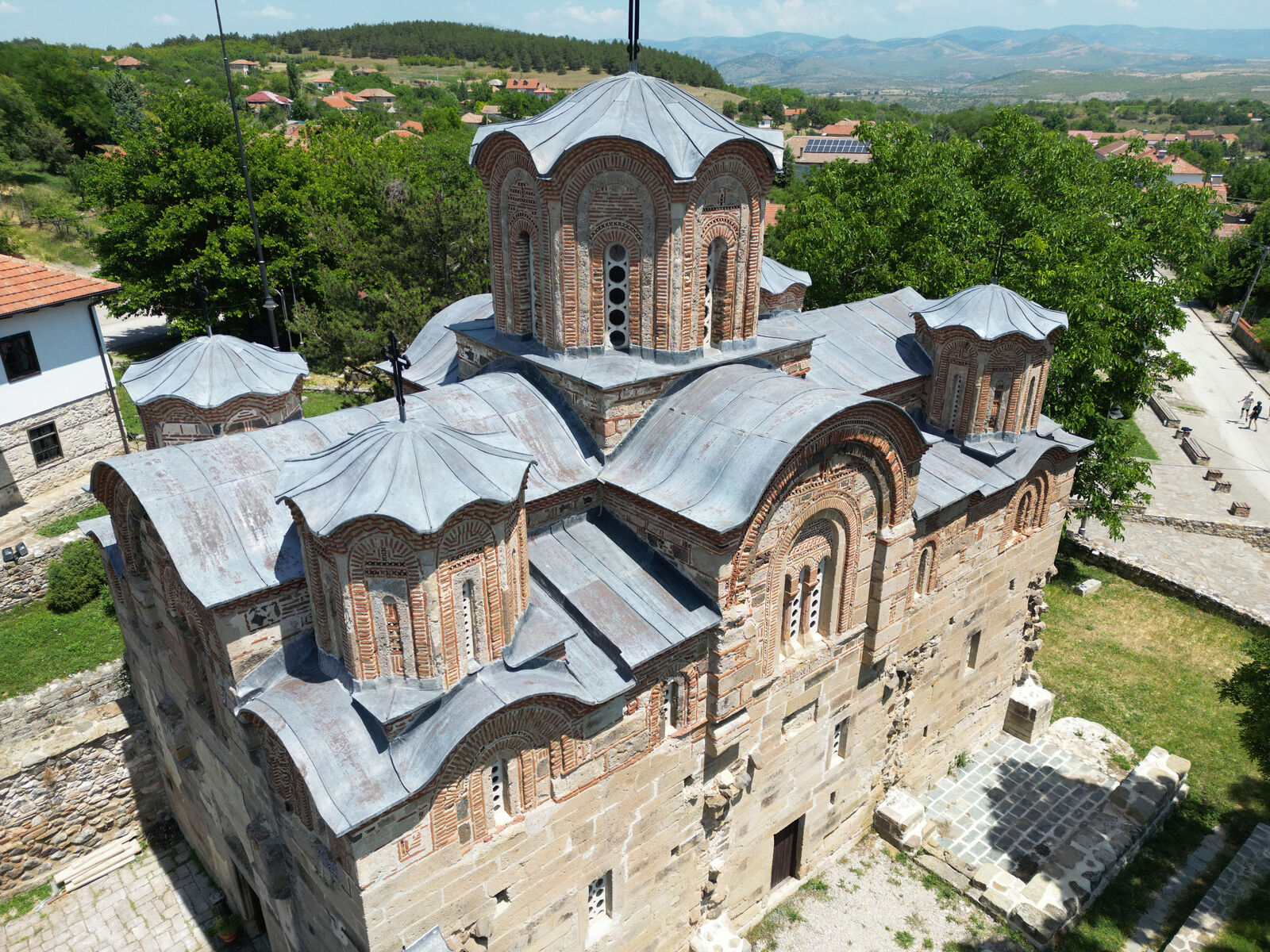

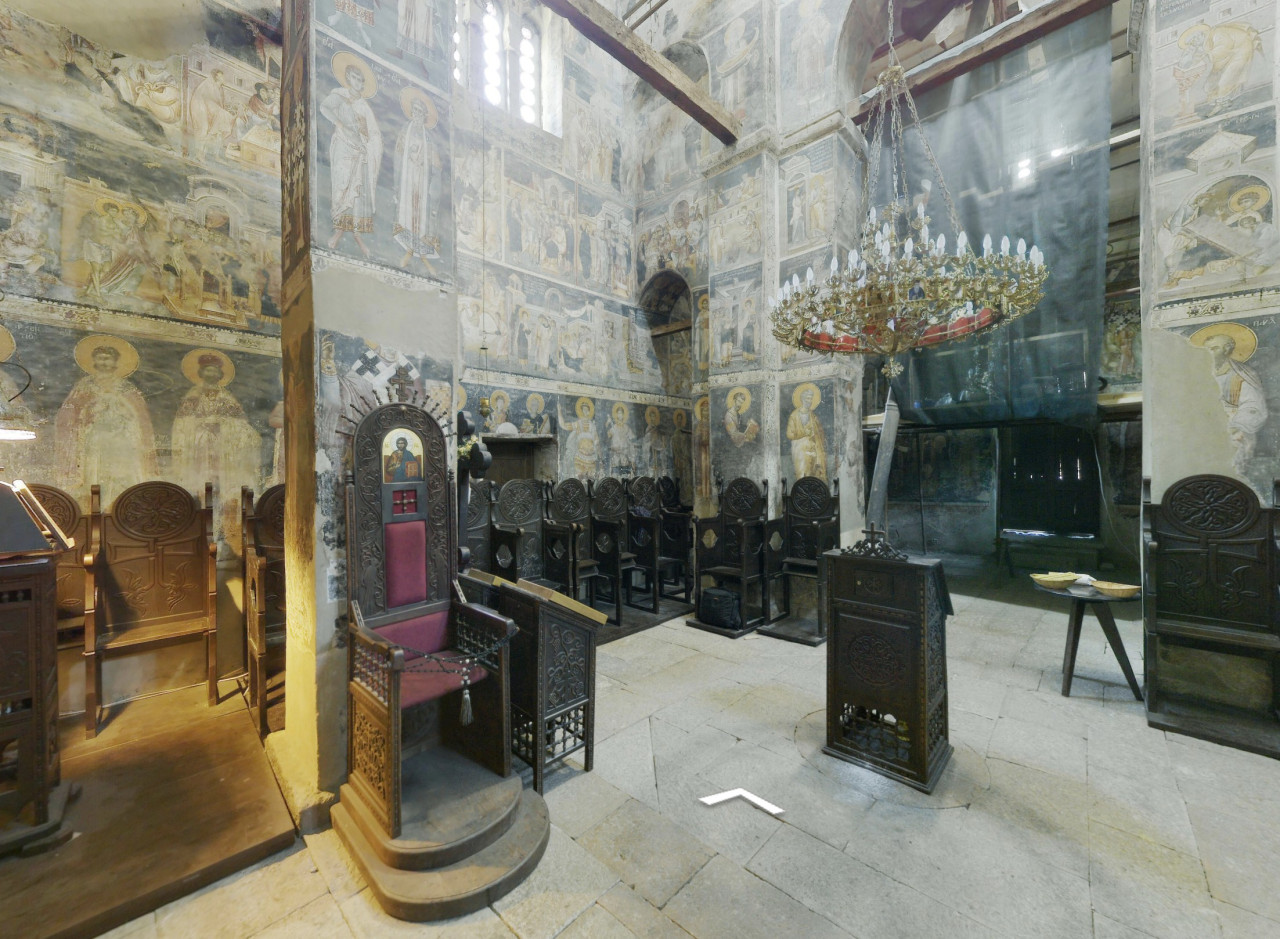
The Church of St. George in Staro Nagorichane, located just ten kilometers east of Kumanovo, North Macedonia, is a site steeped in history and art. Its origins are tied to a fascinating legend from the 11th century, which attributes the construction of the first church to the Byzantine Emperor Roman IV Diogenes (1068-1071). The legend states that Diogenes, after a hunting incident involving a wounded deer, met the hermit St. Prohor Pcinjski, who prophesied his imperial ascent. In gratitude for the fulfilled prophecy, Diogenes reportedly built the original St. George church. While the whole appearance of this early structure remains unclear, remnants of its masonry suggest a rectilinear building with a semicircular apse. The current monumental church, however, is essentially the result of a significant reconstruction between 1312 and 1318 by the Serbian King Milutin (r. 1282-1321).
King Milutin's architect built the new church upon the well-preserved walls of the older 11th-century edifice, which stood up to a height of six meters. While the original building utilized carefully cut stone, the 14th-century additions incorporated a combination of stone and brick, along with thick mortar joints. The architect aimed for a five-domed solution, drawing inspiration from contemporary Byzantine architecture, particularly successful examples in Thessaloniki, such as St. Catherine and the Holy Apostles. The design also shows considerable influence from the Church of the Virgin Ljeviška in Prizren. Notable architectural features include elongated cross arms that extend to the facades, giving the exterior the appearance of an inscribed cross, as well as small corner domes integrated with the longitudinal vaults. The architect skillfully avoided simple facades, instead opting for a diverse range of elements, including pilasters, archivolts, and decorative brickwork.
The magnificent fresco paintings within the church date back to 1317/1318. These masterpieces are confidently attributed to the renowned workshop of the painter Michael, who is considered among the most esteemed master painters of the 14th century. His signature is found in several locations within the church, including Michael's name on a military saint's shield, and also, along with the year 1316/17, on the robe of another saint. An inscription on the western wall of the narthex confirms the completion of the wall paintings in 1317/18. Their artistic style embodies the new Palaeologue classicism, characterized by smooth forms, rich coloristic relations, diverse modeling, and steadfast drawing. Their extensive work for King Milutin includes other significant commissions such as the Church of the Virgin Peribleptos in Ohrid (1294/5) and the King's Church in Studenica (1313/14).
The iconographic program is comprehensive, featuring cycles of the Life of Christ and St. George in the naos, the Life of the Virgin Mary in the prothesis, and St. Nicholas in the diakonikon, with the Menologion adorning the narthex. An exciting feature is the "donor portrait" on the northern wall of the narthex, depicting King Milutin holding a model of the church, alongside his wife Queen Simonida. They are accompanied by Sts. Constantine and Helena, and St. George, who is shown presenting a sword to King Milutin. This specific gesture is believed to commemorate Milutin's military victory over the Turks in Asia Minor in 1313, positioning him as a triumphant "new Constantine". The inscriptions throughout the church are notable for their bilingual nature, featuring both "Greek and Old Church Slavonic". The use of Old Church Slavonic for Milutin's inscriptions highlighted Serbian political affiliation. Furthermore, the portrait of St. Sava, the founder and first bishop of the autocephalous Serbian Orthodox Church, includes a Greek inscription with the official title used by the Patriarchate of Constantinople, explicitly confirming the monastery's affiliation with the Serbian Church, especially in a region recently acquired from Byzantium.
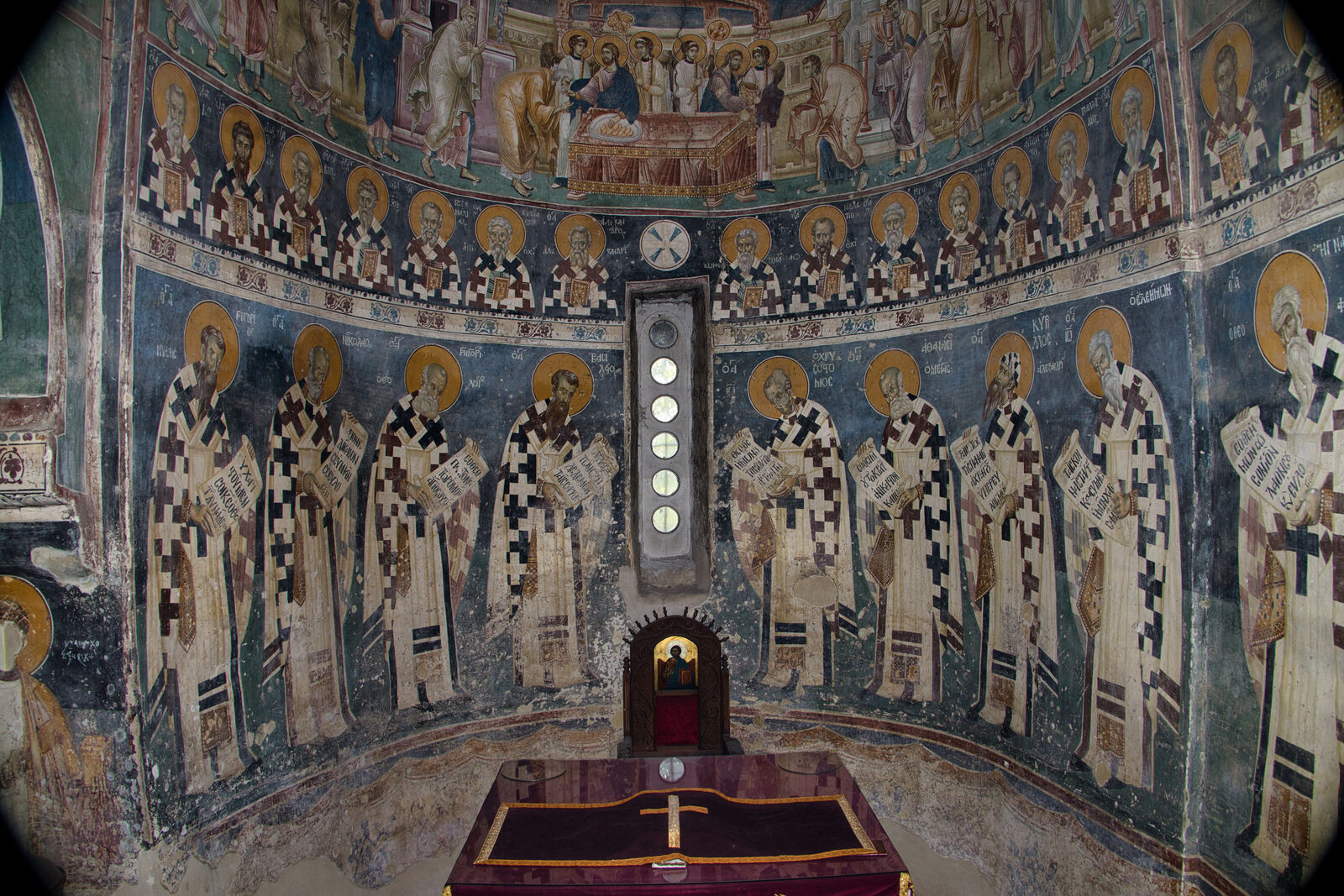
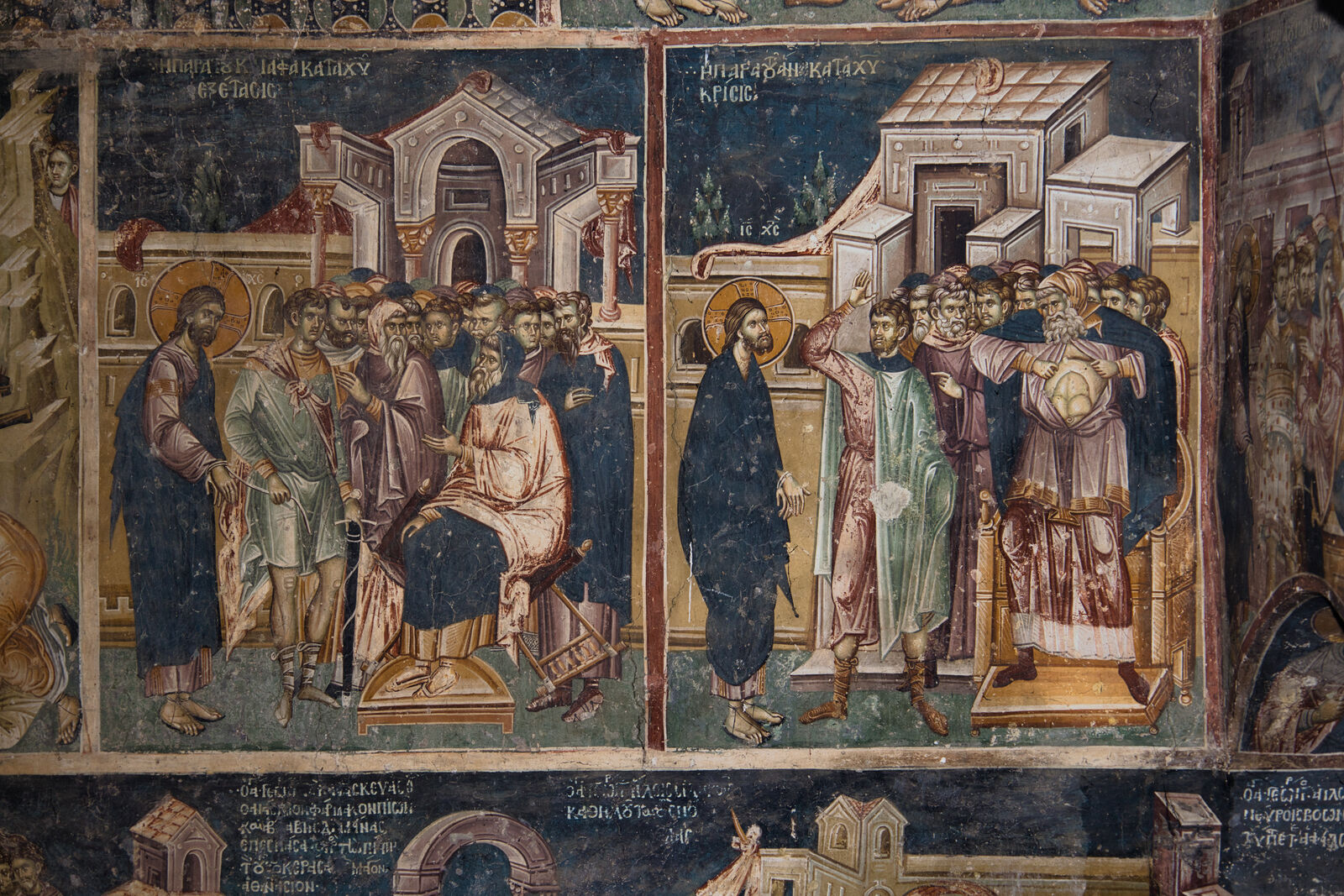
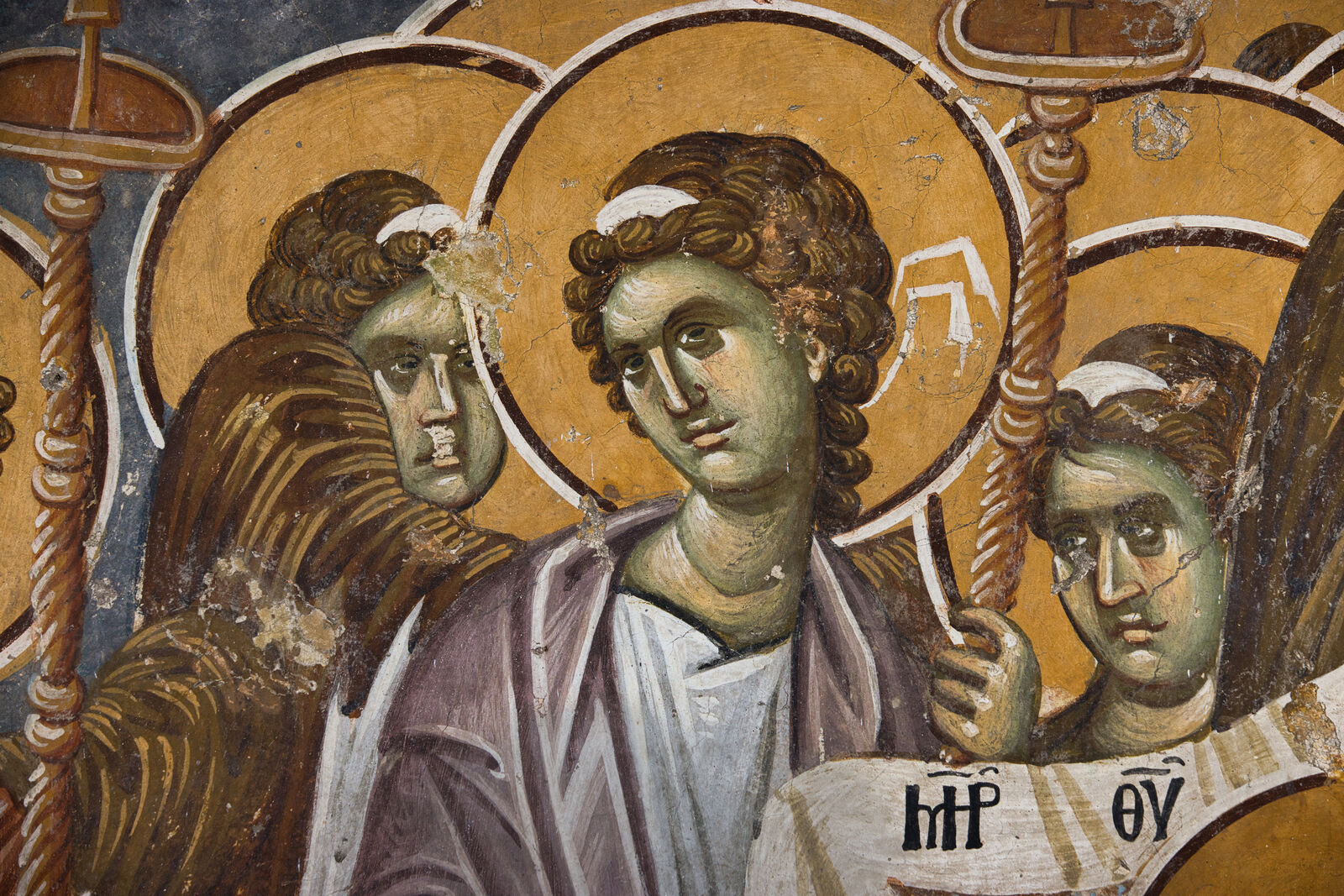
Staro Nagorichane is recognized as a cultural heritage site of the highest category and a masterpiece of 14th-century Byzantine classicism. Unfortunately, it has faced periods of neglect, leading to a poor state of preservation for its precious frescoes. However, there is renewed hope for its restoration.
The church is under the jurisdiction of the Macedonian Orthodox Church.
The BLAGO Team visited Staro Nagorichane in June of 2025. Due to some restoration work on the narthex area, only the nave and sanctuary collections are currently available in the monastery archives.

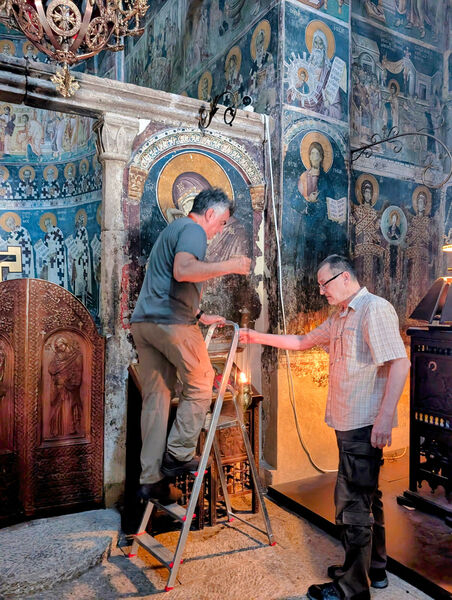
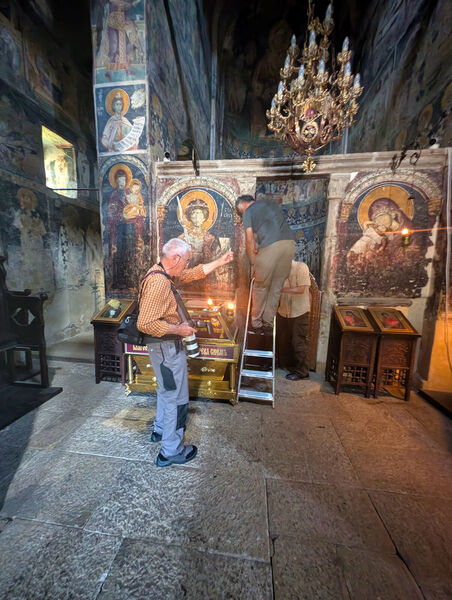
More Information
BLAGO Content
While the content of the BLAGO Fund collections is free to use, there are also some restrictions on commercial use and proper attribution of the material. Follow the links below for more information.
> BLAGO Collections License
> Image Request
BLAGO Fund also accepts the contribution of material. Please contact us with any material you wish to publish on our website.
Contact
BLAGO Fund, Inc.
PO Box 60524
Palo Alto, CA 94306
USA
info@blagofund.org

